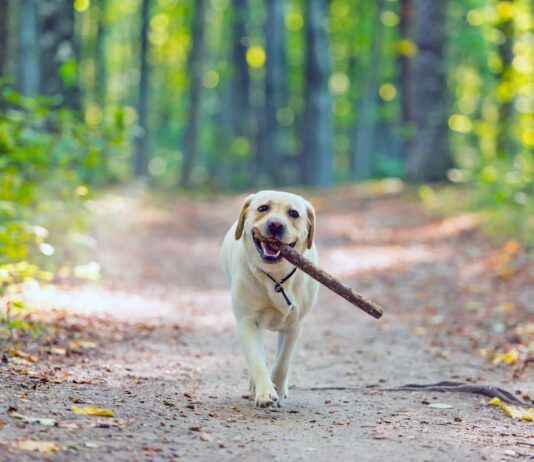(Holistic Remedies #3) – Causes for Hot Spots
Your dog has a weeping, oozing wound on her leg or a yucky red blob on the top of her head, and at first you wonder how she injured herself. But if you’ve been around the dog-care block, you realize that it isn’t a cut or a scrape. That gooey mess might be diagnosed as pyotraumatic dermatitis, wet eczema, or a Staphylococcus intermedius infection, but it’s what everyone calls a hot spot.
(Fleas #2) – Effects of Chemical Flea Control Methods
Every dog owner knows that getting rid of fleas can be one of the biggest challenges of dog-keeping. Few people know, however, that the process can also be the most damaging to their dog’s health. Specifically, the use of insecticides on the dog and all around the dog’s environment can cause nerve and liver damage, impair the immune system, and even cause cancer.
(Do Over Dogs Tip #3) – Behavior Problems in Rescued Dogs
You have adopted your Do-Over Dog, brought him home, helped him adjust to the new changes in his world, instituted necessary management procedures, and started on an appropriate training program. In the best of all worlds, that would be all you’d need. But most Do-Over Dogs were in shelters for a reason. There are often behavior challenges that go beyond the simple need for basic good manners training.
(Positive Perspectives 2 Tip#2) – Meals Versus Free Feeding
I cringe internally when a client tells me she free-feeds her dog¬—that is, keeps the bowl on the floor filled with kibble all the time. I’m a strong believer in feeding meals for a number of reasons, in addition to the medical fact that a dog’s digestive system is designed more to gorge than to graze. There are numerous advantages to feeding your dog specific amounts of food at specific times:
(Train Your Dog Like a Pro Tip#1) – Walking on a Leash
Walking nicely on leash is not the same thing as heeling. Heeling is much more precise and demanding, and – while an interesting behavior to train – is rarely employed by pet owners on walks. The point of the walk, in fact is to give the dog an opportunity to check out smells, a great pleasure for dogs, and this is impossible if he is heeling. So walking on leash is a compromise both owner and dog can live with. It allows the dog some freedom but not so much that he is all over the place (meaning switching sides) or pulling, which makes the walk unpleasant for the owner.
(Train Your Dog Like a Pro Tip#2) – Types of Visitors
Visitors and guests fall into two groups: those who will be happy to pitch in and help you train your dog, and those who you can’t afford to have the dog jump on even once or twice. The former group is the one you want to help you train your dog’s behavior. For the latter group, put the dog away when they come over until she has done a few rounds with “helper” people. Once she’s proofed, the dog will sit politely for everybody, including people who would have been distressed or offended by your dog jumping on them.
(Do Over Dogs Tip #1) – Rules for Playing Tug of War With Your...
Tug is a great game to play with your dog to work off energy and allow the two of you to roughhouse safely. It won’t make him “dominant” and it won’t make him aggressive or unruly, as long as you play by the rules. And it’s the process of being able to follow rules and exhibit a degree of self control that makes this game such a great one for Do-Over Dogs.
(Canine Ancestral Diet #1) The canine ancestral diet – Introduction
Recent nutritional science increasingly supports an ancestral-type diet – high protein, balanced fats, and at least some fresh foods – as the healthiest approach to feeding most dogs.
(Dog-dog aggression tip#2) Breaking Up Dog Fights
There is no golden standard for breaking up a dogfight, but there are as many opinions as there are dog owners. My recommendation is to try a sudden aversive, such as a loud noise near the combatants as a first line of defense. Bang pots and pans or steel water dishes together while yelling. Cease the instant the dogs disengage.
(Socializing Your Puppy or Dog Making a Difference #4) Socializing Your Puppy or Dog:...
You’d better get out there and get started! There’s no such thing as overkill when it comes to properly done socialization. You can’t do too much. Pups who are super-socialized tend to assume that new things they meet later in life are safe and good until proven otherwise.
(Aggression #2) Modifying Aggressive Behavior
We do know that aggression is caused by stress. With the very rare exception of idiopathic aggression – at one time called “rage syndrome,” “Cocker rage,” or “Springer rage” and grossly overdiagnosed in the 1960s and ’70s – aggression is the result of a stress load that pushes a dog over his bite threshold
(Positive Training Basics #1) – Were Positive
Positive does not mean permissive. We just have different ideas about the necessary nature of the negative consequence. When one is needed, positive trainers are most likely to use negative punishment (taking away a good thing), rather than positive punishment (the application of a bad thing). As an adjunct to that, we counsel the generous use of management to prevent the dog from practicing (and getting rewarded for) undesirable behaviors.





